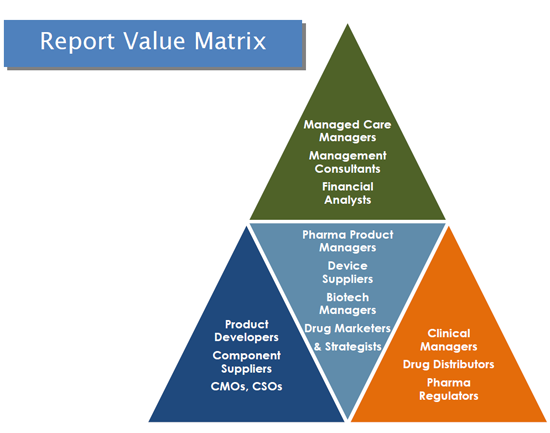
|
市場調査レポート
商品コード
1783024
生物学的注射薬 - 技術、治療法、市場、戦略、予測Therapeutic Biological Drugs for Injectable Delivery - Technologies, Therapeutics, Markets, Strategies & Forecasts |
||||||
|
|||||||
| 生物学的注射薬 - 技術、治療法、市場、戦略、予測 |
|
出版日: 2025年06月30日
発行: Greystone Research Associates
ページ情報: 英文 129 Pages
納期: 即日から翌営業日
|
全表示
- 概要
- 目次
生物学的製剤デリバリーに新たなプラットフォームを提供するデバイス工学
生物学的製剤は、開発パイプラインや臨床試験においてその他のすべてのNCEを凌駕し続けています。生物学的製剤は慢性疾患を対象とすることがほとんどであるため、投与戦略や治療プロトコルは長期間の使用に耐えうるように開発しなければならず、多くの場合、病状に直接関連した制限を受ける可能性のある患者による自己投与のために開発しなければなりません。抗体、ホルモン、酵素、その他の生物学的製剤の強力な生理学的作用も、安全性とアドヒアランスへのニーズを高めています。デバイス設計者と医薬品開発者の協力は、医薬品開発サイクルのかなり早い段階で行われており、多くの場合、特定の薬物療法のバイオアベイラビリティ目標や薬物動態プロファイルに合わせたデバイス設計が可能になっています。現在開発されている新しい注射薬デリバリーデバイスのデザインは、代替の注射法の新たな機会を生み出すとみられます。デバイスサプライヤーと製薬企業とのパートナーシップは、治療ワクチン、DNAベースの薬剤、タンパク質ベースの生物学的製剤など、多くの新しい治療法に用いられる新しい注射デバイスの市場での受け入れを促進するとみられます。

当レポートでは、生物学的注射薬市場について調査分析し、生物学的製剤の投与に用いる注射デバイスの経済、技術、疾患セグメント、商機に関する情報を提供しています。
学べること
- 生物学的製剤デバイスの選択プロセスを促進する製品とユーザーの要件
- 生物学的製剤を投与できる注射デバイスに不可欠な設計要素、技術、開発の課題
- 開発段階における生物学的製剤の製造プロセスの変化は、デバイスの上市準備度にどのような影響を与え、近年の動向でどのように変化しているか
- 生物学的製剤のクラス全体で、デバイスの選択決定はどのように整合するか。治療標的は?市場セグメントは?
- 医薬品と医療機器の依存関係は、上市前後の製品ライフサイクル管理にどのような影響を与えるか
- 生物学的製剤注射デバイス市場に影響を与える重要な経済、技術、規制要因
"Therapeutic Biological Drugs for Injectable Delivery: Devices, Therapeutics, Markets, Strategies and Forecasts" is a comprehensive evaluation and analysis of the technology, products and participants providing the driving force behind this evolving segment of the healthcare sector. The study is designed to provide drug company decision makers, drug delivery developers, device designers, healthcare marketers, and supply chain participants with a detailed understanding of the economics, technologies, disease segments, and commercial opportunities for injection devices for administering biologicals. Provider organization business managers, healthcare administrators and investors will also benefit from this study.
Device Engineering Providing New Platforms for Biological Drug Delivery
Biological drugs as a class continue to outpace all other NCEs in development pipelines and clinical trials. Because biological drugs most often target chronic conditions, dosing strategies and treatment protocols must be developed for long-term use, often for self-administration by patients who may have limitations directly related to their condition. The powerful physiological effects of antibodies, hormones, enzymes and other biological drugs also increase the need for safety and adherence. Cooperation between device designers and drug developers is occurring much earlier in the drug development cycle, allowing device designs in many cases to be tailored to the bioavailability targets and pharmacokinetic profiles of specific drug therapies. New injectable delivery device designs currently being developed will create new opportunities for alternative injection methods. Partnerships between device suppliers and pharmaceutical companies will foster market acceptance of new injection devices for a host of new therapies such as therapeutic vaccines, DNA-based drugs, and protein-derived biologics.

What You Will Learn:
- What are the product and user requirements that drive the biological drug-device selection process?
- What are the essential design factors, technologies and market development issues for injection devices capable of administering biological dugs?
- What is the impact of development-stage biological manufacturing process changes on device go-to-market readiness and how has it changed in recent years?
- How do device selection decisions align across biological drug classes? Therapeutic targets? Market segments?
- What is the impact of drug-device dependencies on pre- and post-marketing product life cycle management?
- What are the significant economic, technology, and regulatory factors affecting the market for biological drug injection devices?
Methodology:
Research methodology is based on primary research in the form of in-depth interviews with key market participants, technology developers, distributors, industry experts, and market influencers, a list that includes regulatory officials, industry trade groups, and materials standards organizations.
Primary data is evaluated and normalized against secondary sources including trade journal articles, technical literature, industry publications, company data sheets and published information, and statistical data from government agencies and trade associations.
Forecasts and projections of market demand and future market activity are derived using standard modeling and statistical techniques.
Table of Tables
Executive Summary
The Market Opportunity
- Unmet Patient Needs
- Biosimilars
- The Biological Drug Global Supply Chain
Biological Drug Delivery - Challenges and Limitations
- Drug Stability
- Pre- and Post-Manufacturing Engineering
- Lyophilization and Reconstitution
- Viscosities and Volumes
Drug Strategies & Therapeutic Protein Packaging
- As-Supplied Packaging
- Device Market Share
- Device Supplier Segment Activity
- Emerging Injection Devices for Biological Drugs
Injectable Biologicals - Product Analysis by Drug Class
- Cytokines
- Enzymes
- Fusion Proteins
- G-CSF/GM-CSF
- Hematopoietics
- Hormones
- Immune Modulators
- Insulins & GLP Analogs
- Monoclonal Antibodies
- Vaccines
Therapeutic Market Segment Analysis
- Cardiovascular
- Diabetes
- Hematology
- Immunology
- Metabolic
- Oncology
Market Factors
- Regulatory Issues
- Patient Preferences and Self-Administration
- Pre- and Post-marketing Device Evolution
- Compatibility Testing


